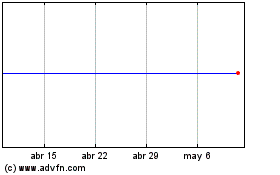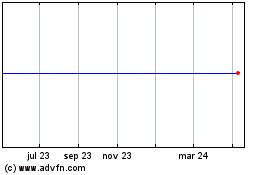Live Streaming From the Ballot Box Is the Next Legal Battleground
04 Noviembre 2016 - 12:55PM
Noticias Dow Jones
By Trisha Thadani and Deepa Seetharaman
Next week, there will be something new in the voting booth: Live
video streaming.
This is the first U.S. presidential election where
live-streaming tools, which encourage users to broadcast their
surroundings in real time, are available from Facebook Inc. and
Twitter Inc.
As was the case with selfies four years ago, the use of live
video in polling stations and within the voting booth could
exacerbate the tension between freedom of expression and the right
to privacy.
"The rhetoric of this campaign creates a desire to document,"
said Michelle De Mooy, an acting director of the privacy team at
the Center for Democracy & Technology, a nonprofit and
nonpartisan technology advocacy organization based in Washington,
D.C. "There's a certain sense of, 'I have this tool that can
document what I've done and there's no gray area.'"
Legally, a gray area has opened up, as technological innovation
has outpaced the law. In many states, streaming live video from
polling places is likely to be deemed illegal.
Many years ago, some states put in place laws banning
photography and video of polling places and ballots to prevent vote
buying, intimidation and coercion. In theory, if photos and videos
are allowed in voting booths, voters can more easily prove how they
voted.
There are major distinctions between selfies and live streaming,
experts say. Live video is more likely to capture someone else in
the image without his or her consent. Also, there is no lag between
when something is filmed and when it is broadcast.
"Without a lag, election workers can't intervene and ask voters
to delete the video," said Lisa Manheim, an election-law professor
at the University of Washington School of Law. "It presents more of
a challenge to election administrators than a simple ballot
selfie."
Live video streaming could add an extra level of surveillance
inside polling stations to ensure poll workers and other voters are
behaving fairly, said Jonathan Stonestreet, an associate director
of the democracy program at the Carter Center, which is involved in
election observation world-wide.
However, it could be also be a form of voter intimidation if
voters start to doubt the secrecy of their ballots. "The basic
point of a polling station is securing that the voter has a place
to vote in secrecy," Mr. Stonestreet said.
For younger voters, who have grown up with technology seamlessly
integrated into their lives, election photos and videos are part of
their social-media presence. Many users post their choice for
president as a sign of pride, and the idea that selfies or live
video could be against the law is foreign to them.
Singer Justin Timberlake last week posted a selfie taken while
posing with his ballot in Tennessee before finding out that it was
prohibited under state law.
The new popularity of live video, which has exploded this year
since the launch of Facebook Live in April, opens the door for its
use during voting. Facebook, Twitter and Snap Inc.'s Snapchat see
Election Day as the kind of major event that live streaming is
designed for.
Facebook is "proactively encouraging people to go live on
Election Day," a spokeswoman said.
Snapchat has seized on the election by encouraging people to
share pictures or videos, "whether it's a campaign button or a
selfie from the ballot box," according to a Snapchat
spokeswoman.
The social-media companies say it is a user's responsibility to
comply with laws prohibiting photography or video of polling places
and ballots.
It is unclear if the laws prohibiting photography in polling
stations will be applied to live video. States including
California, New York and Colorado have been reviewing their selfie
bans.
Live video might catch election officials off guard. Mark Zema,
who will be supervising a voting precinct this year in Stevenson
Ranch, Calif., said he hasn't received any instructions on how to
deal with live video streaming on Election Day.
He expects voters to disregard the state law banning photos and
video in the polling booth. "Everyone has a smartphone, so what are
you going to do?" said Mr. Zema, 61. "You just have to go with
it."
Write to Trisha Thadani at Trisha.Thadani@wsj.com and Deepa
Seetharaman at Deepa.Seetharaman@wsj.com
(END) Dow Jones Newswires
November 04, 2016 14:40 ET (18:40 GMT)
Copyright (c) 2016 Dow Jones & Company, Inc.
Twitter (NYSE:TWTR)
Gráfica de Acción Histórica
De Jun 2024 a Jul 2024

Twitter (NYSE:TWTR)
Gráfica de Acción Histórica
De Jul 2023 a Jul 2024
